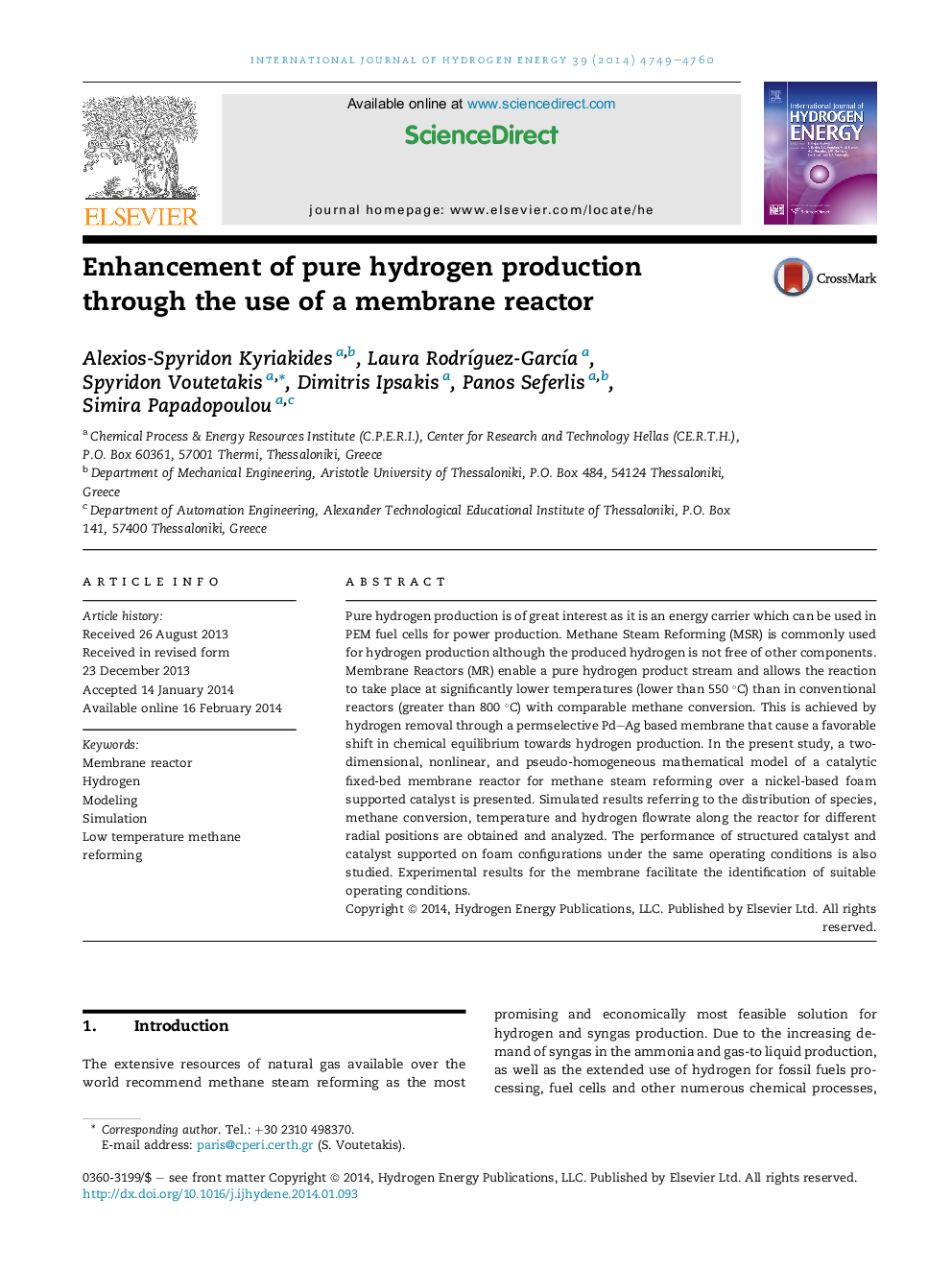| Article ID | Journal | Published Year | Pages | File Type |
|---|---|---|---|---|
| 1270566 | International Journal of Hydrogen Energy | 2014 | 12 Pages |
•Enhancement of hydrogen production through the use of a membrane reactor.•Better thermal distribution due to the use of catalyzed foam.•Membrane permeance more important than catalyst activity for a given reactor.
Pure hydrogen production is of great interest as it is an energy carrier which can be used in PEM fuel cells for power production. Methane Steam Reforming (MSR) is commonly used for hydrogen production although the produced hydrogen is not free of other components. Membrane Reactors (MR) enable a pure hydrogen product stream and allows the reaction to take place at significantly lower temperatures (lower than 550 °C) than in conventional reactors (greater than 800 °C) with comparable methane conversion. This is achieved by hydrogen removal through a permselective Pd–Ag based membrane that cause a favorable shift in chemical equilibrium towards hydrogen production. In the present study, a two-dimensional, nonlinear, and pseudo-homogeneous mathematical model of a catalytic fixed-bed membrane reactor for methane steam reforming over a nickel-based foam supported catalyst is presented. Simulated results referring to the distribution of species, methane conversion, temperature and hydrogen flowrate along the reactor for different radial positions are obtained and analyzed. The performance of structured catalyst and catalyst supported on foam configurations under the same operating conditions is also studied. Experimental results for the membrane facilitate the identification of suitable operating conditions.
Graphical abstractFigure optionsDownload full-size imageDownload as PowerPoint slide
